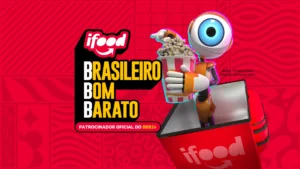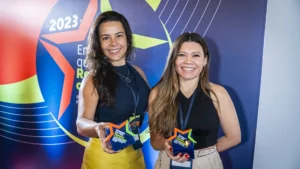Fabricio Bloisi reveals how foodtech was structured to operate in both models at the same time
iFood is a company driven by innovation constant, is always testing new hypotheses, but it also already has the size of a large business, with more than 270 thousand partners and more than 5,000 employees across the country. After all, it is a startup or a big company?
“iFood is both and behaves like both all the time”, responds its CEO, Fabricio Bloisi, in the third episode from the series “Recipe for the New Economy”, in iFood News channel on YouTube. How is this possible? He reveals in this video, in which he talks about one of his favorite topics, which he considers one of the richest in the field of business management: the maturity cycles of people, companies and technologies.
“S” shaped life cycle
Fabricio illustrates the life cycle of a product with an S-shaped curve, marking the phases of introduction, growth, maturity and decline. “In the introduction phase, startups they need money. Critical HR are engineers and scientists. What makes a difference is know-how, because we are discovering operations that no one knows the answer to”, he explains.
In the next phase, the structure changes radically. When the company starts to grow and already has a product that works, it needs to develop marketing, services, processes. “There needs to be many more managers managing the complexity of the company. We have to focus much more on investing to grow and on marketing and communication capabilities.”
With maturity, companies operate more stably, but they can decline if their product is no longer needed as it once was. “Understanding this dynamic is very important for startups realize that the way they operate is important at this moment, but as soon as the market matures, it will have to develop in marketing, services, processes”, says Fabricio. “For mature companies, this curve is essential to understand that at some point that market will decline. What is the plan so that there is a new curve and they continue to be relevant companies?”
New technology adoption cycle
When a new technology appears on the market, initially those who buy are enthusiasts and visionaries, who are only 15% on the market. When the first few years pass and that technology works, those who start to buy are the pragmatic customers, who are not willing to test, but adopt what works.
“It is important to know that the majority of the market is made up of people who will only buy a new product if they know it works”, points out Fabricio. “And a good part of consumers, a late majority, will buy not only when it works, but when it works and is cheap.” And there are still skeptics, estimated at 15% of the public, who will only buy when they have no alternative.
Investment cycle
Fabricio also shows that the investment follows different phases in the company’s evolution. In the initial phase, resources come from angel investors, usually with little capital. “In the high growth phase, you need more investment, real risk capital, private equity, which are companies that invest even more money. And then come consolidations, mergers and acquisitions, and the company can go public.”
People maturity cycle
Creative people are crucial at the beginning of the company's history, as it is necessary to innovate. “I need resilient and hard-headed people too. Things will go so wrong at the beginning that there have to be those people who don't give up”, points out the CEO.
A mature company, on the other hand, needs people who are more focused on finance, realistic, who will face what Fabricio calls “brutal facts”, and who know how to communicate with a thousand or two thousand people. “People are different. I need all types of people: creative people who will always be reinventing themselves, and structured people, who can run a big business”, he says.
For him, the most important point of the conversation is: “For the company to succeed, you need to be ambidextrous: good at innovating and good at managing complex businesses.” This is how, says Fabricio, that iFood operates at the same time as a startup and a big company.
The secret to innovating and resisting time, therefore, is to design an ambidextrous cycle, in which the company has the ability to run very well as a startup (to reinvent products and continue innovating) and as a large company, to grow in a structured way. “If you have the ability to successively operate in all phases of the cycle, not only will you have a startup that will grow, but it will remain large for many years. This is how we try to set up and maintain the iFood strategy.”


